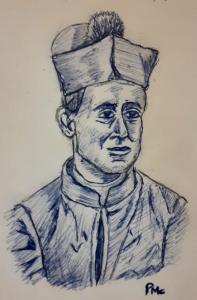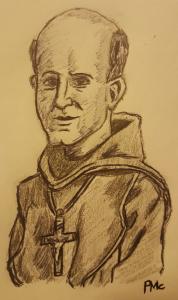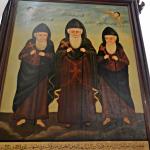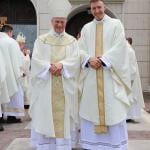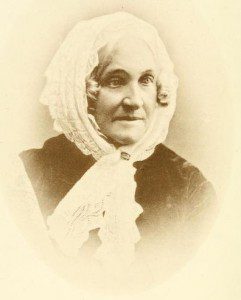 Born in Ohio, Sarah Worthington was the daughter of a prominent Ohio politician. During her childhood Thomas Worthington would serve as a United States Senator and Governor of Ohio. The family was frequently full of distinguished visitors such ranging from Henry Clay to the Indian Chief Tecumseh. The Worthingtons were devout Methodists, and young attended boarding school before marrying lawyer Thomas King at age sixteen.
Born in Ohio, Sarah Worthington was the daughter of a prominent Ohio politician. During her childhood Thomas Worthington would serve as a United States Senator and Governor of Ohio. The family was frequently full of distinguished visitors such ranging from Henry Clay to the Indian Chief Tecumseh. The Worthingtons were devout Methodists, and young attended boarding school before marrying lawyer Thomas King at age sixteen.
She soon converted to Epsicopalianism, her husband’s religion. She became interested in the High Church movement which stressed a more ornate ritual than the Low Church wing of Episcopalianism. Described as a “handsome, poised woman,” she became a leading figure in Cincinnati, where she worked with orphans and headed the city’s Sunday schools.
After her husband’s early death in 1836, Sarah moved to Cambridge, where her sons were attending Harvard. There she became increasingly disinterested with Protestantism, particularly in its Unitarian form. Among her acquaintances was poet Henry Wadsworth Longfellow, who wrote that she was “a very attractive woman with an intellectual style of beauty that leaves one quite captive.” In 1844, she married William Peter, an Englishman, and moved to Philadelphia.
Again she worked with the poor, and helped found the Philadelphia School of Design, now known as Moore College of Arts and Design. It was the first of several schools of industrial art for women in the United States. After the death of her second husband in 1853, Sarah travelled to Europe, where her first extended encounter with Roman Catholicism took place. She was impressed with the bishops she met, with the Catacombs, but most especially with the Good Shepherd Sisters who worked with destitute women. She hoped to “spend the rest of my life doing good work for the poor Magdalens.”
On March 25, 1855, Sarah Worthington King Peter was received into the Church. Moving back to Cincinnati, some old friends “received her with a wary eye” since her conversion. As a lay benefactor, Sarah exercised a great deal of influence in bringing various religious communities to Cincinnati, including the Sisters of Mercy and the Little Sisters of the Poor. (At one point she even advised her Paulist friend Isaac Hecker to start a community of Paulist Sisters which never materialized.) She even renovated for home for a community of contemplative nuns, living with them as a semi-religious.
Between frequent trips to Rome and Lourdes, and working with the poor, Sarah managed to translate a 2,500 page Church History from the French. At age 74 she became a Third Order Franciscan, a layperson who attempts to live out the community’s charism in her own daily life. After her death in 1877, the Archbishop of Cincinnati said at her funeral Mass: “I do believe we have lying before us the remains of a saint, and I would rather myself pray to her than for her.”




